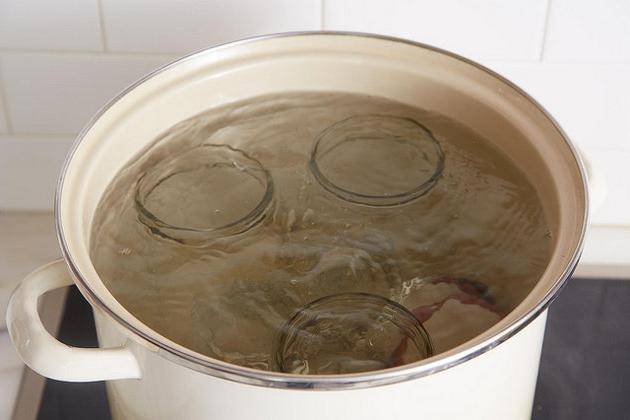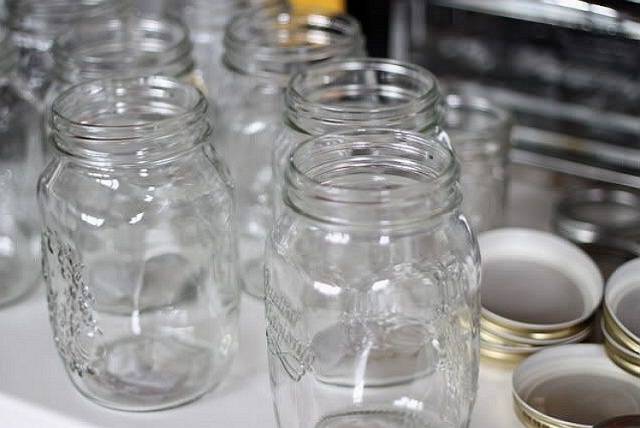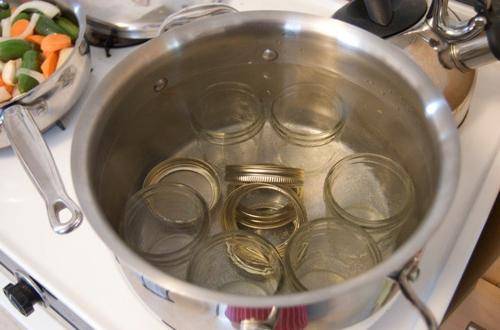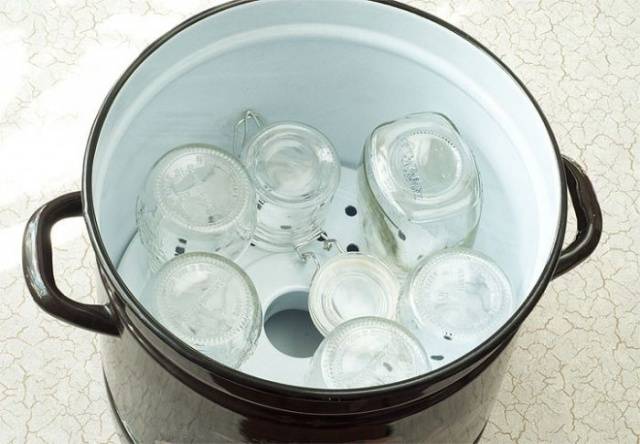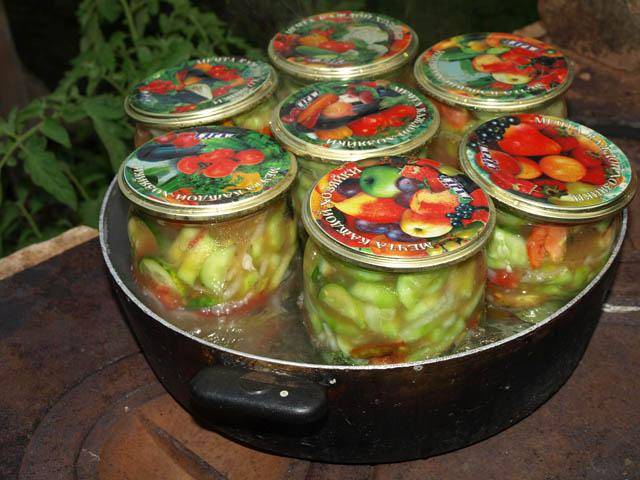Content
For many novice housewives, sterilization of cans causes certain difficulties: how to sterilize, which method is better to choose and how long should the procedure last? Answers to all these questions can be found later in the article. The information provided will certainly be useful for every housewife and will allow you to prepare jars for canning food for the winter with the highest quality.
General rules for the preparation of cans
Canning vegetables and fruits can be called an old Russian tradition. Self-rolled products are always tastier and healthier than purchased counterparts. That is why caring housewives try to preserve products maturing in the beds and in the garden as high quality as possible. And how sad it can be when an insufficiently clean bank becomes the cause of damage to the seams, which were created with your own hands with love and care. Such sad consequences can be prevented only by high-quality sterilization of cans. This can be done in several ways, but whichever option the hostess chooses, she must follow some general rules of sterilization:
- Before using the jar, you need to make sure that its neck is intact. Even a small chip can impede the safe canning of fruits and vegetables.
- Seaming caps must be intact, even, without visible damage or dents. There must be an elastic band under the rim of the lid.
- Before sterilization, wash the glass container with a new sponge and baking soda or detergent. Particular attention should be paid to the neck of the jar during washing, since it is on it that persistent dirt most often accumulates.
- Reusable screw caps should be carefully inspected before use. On their inner surface there should be no damage, scratches, or traces of rust.
- During sterilization, the principle of gradually increasing temperatures must be applied. Sudden temperature fluctuations lead to damage to glass containers.
Having selected whole jars, thoroughly washing them, observing all the listed requirements, you can proceed to sterilization. There are several ways to carry out such cleaning, but most often housewives use sterilization of cans in a pot of water.
Boiling cans in a saucepan
It is convenient to sterilize small jars in this way: half liter or liter glass containers. The point is that sterilization involves boiling the cans in a large pot where they can fit completely.
Having found the necessary pan and having collected the already pre-washed cans, you can begin to sterilize them:
- put a piece of cloth on the bottom of the pan;
- put the jars in the container with the neck up;
- pour cold water into a saucepan so that the glass containers are completely immersed in it;
- you need to sterilize the container for 15 minutes;
- lids can be sterilized in boiling water together with jars.
This method of sterilizing cans is used by many housewives. It does not require special devices and allows you to quickly clean the required number of cans. The only drawback of this method may be the lack of a pan of the required size.
Steam sterilization
This method of cleaning cans is one of the most common.For its implementation, it is necessary to use a saucepan (a small one can be used) for boiling water, a metal grate and the cans themselves.
The steam sterilization process is as follows:
- Pour water into a saucepan, bring it to a boil.
- Place a grid on top of an open pot of boiling water. You can use a grate from a gas stove oven, a metal colander, or something similar.
- Jars are placed on top of the lattice in an inverted state (bottom up).
- During the boiling process, condensation will accumulate on the inside of the cans, turning into large drops of water. As soon as the drops have washed the entire surface of the can, you can end sterilization.
- The sterilized cans are carefully removed from the grate with a tack and placed in the same inverted state on a clean towel or a piece of cloth on the table.
Depending on the intensity of the boiling water, cans sterilization can take from 6 to 10 minutes. Steamed jars and lids can remain clean on the table for up to 2 days.
Steam cans can also be sterilized inside the pot. To do this, place a small grate or metal lids on its bottom so that the glass containers do not touch the pan itself. The jars are placed on the wire rack with the neck down, a little water is poured into the bottom of the pan. During the boiling process, the steam will wash the inner surface of the glass container, cleaning it efficiently. The advantage of this method is the fact that the steam accumulates in the cavity of the cans, and does not increase the humidity in the room. Cover the pot with a lid if desired.
Sterilization of filled cans
You can sterilize not only empty but also filled cans. This method is often used when canning vegetable salads, lecho, adjika and some other products, the preparation of which is carried out using cooking, in small cans.
The filled jars are sterilized as follows:
- The hot product is placed in glass containers.
- The filled container is covered with a lid and placed in a saucepan with warm water. The volume of liquid should cover the outside of the can, but not fill the inside of the jar while boiling.
- It is necessary to boil water for 15-30 minutes, depending on the volume of the container. For half-liter containers, 15 minutes is enough, for liter containers this time should be 25-30 minutes, it will be quite problematic to sterilize three-liter filled cans in this way, therefore the method is used extremely rarely.
- After boiling, the jars are carefully removed from the hot water and rolled up.
There are many sterilization methods. Most of them are based on the use of high temperatures, which can be obtained by heating the oven, steamer, microwave and other devices and appliances. You can learn more about the various methods of sterilization by watching the video clip:
Conclusion
High-quality sterilization of cans is the key to the successful storage of canned food. That is why, when preparing containers, you need to be extremely careful and attentive. Even before sterilization, you need to sort the jars, leaving only whole copies with undamaged necks. Only wash cans with a sponge or brush, detergent or baking soda. Further sterilization should be carried out only in compliance with the above rules, characteristic of a particular method.Improper sterilization can lead to product deterioration during storage or damage to the jars themselves.
